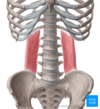Exam 1 Flashcards
(288 cards)
God of Medicine year? what happened?
Aesculapius aka Asclepios 800 BC Son of Apollo and Coronis Zeus hit him with a lightning bolt Became God of Medicine with a temple and cult
what is God of Medicine represented by?
Represented by staff and serpent
Staff: cedar (long lived, durable)
Serpent: wisdom, energy, healing forces
Currently the symbol of the Osteopathic profession

Hippocrates gen hx
–460 to 377 BC
–Physician on the Greek island of COS or KOS
–20th generation of the cult of Aesculapius
Greek Islands
Cos
- Empiric approach
- Condition of the Patient, past activities
- External appearance very closely observed
- Touch, smell, even tasting of patient
- Lifestyle important
–Baths, diet, exercise
•Emphasis on the patient rather than disease
Greek Islands
Cnidos
- Extensive categories of disease
- Symptoms organized by organ affected
- Treatment for each disease was simple and “sparse”
- Emphasis on the disease
Caduceus
hx?
•Symbol of Mercury/ Hermes
–The wings
- Said to have thrown his staff between two serpents to break up a fight
- Never used for medicine until 1800’s
- Symbol of AMA

AT still born
•Born in Lee County Virginia, 1828
AT still moved… where first?
•Moved to Northeast Missouri in 1837
AT stil’s father’s occupation
- Methodist minister
- Supported family as an itinerant physician and farmer
how did at still get –Early exposure to anatomy
- Young “Drew” better hunter than farmer
- Assisted his father on rounds
at still’s Kansas Experience
- Father was appointed to Kansas Territory as missionary to Shawnee Indians
- Still was farming and then decided on career in medicine studying with his father.
- Elected to quasi-legal Free Kansas Legislature in 1857 to combat proslavery forces in state
•Civil War 1860
•Surgeon with 21st Kansas Militia in northern cause
–Rank of Major
–Served for 2 years
•Resumed career as orthodox physician
Calomel
•a rapid acting cathartic
–Contained mercury creating poisoning
- Stomatitis, gangrene of the buccal mucosa,
- Loss of teeth
- Severe intestinal cramps, bloody stool
how treat •Acute nasal catarrh in late 1800’s
- Carbolic acid as an inhaler or nasal spray
- Sulfuric acid as a spray
- Tannic acid as an injection
- Aconite and belladonna tincture every hour
- Arsenic internally or as a cigarette for paroxysmal cases
Aconite
–wolfsbane, a rapid acting poison used as an antipyretic, diuretic, diaphoretic
Belladonna
–=‘deadly nightshade’ source of atropine, anticholinergic, used for diarrhea, asthma
Arsenic internally or
Meningitis epidemic
1864
•Lost three daughters
father died of infectious dz
brother addicted to morphine
1874
- severed ties to regular medicine
- Moved to a more receptive Kirksville, Missouri
- •A.T. Still, Magnetic Healer
1876
ill with typhoid for 6 months, 1876, he became an iternant physician traveling Missouri
“Lightening Bone Setter”
AT still
“ flung to the breeze the banner (of osteopathy)”
•June 22, 1874
Greek roots: what does osteopathy mean?
OSTEON was originally not just bone but flesh in general.
PATHOS referred to the deep things, particularly emotion, in each of us which yearn to be expressed
“deep meaning yearning to be expressed in flesh”
•Four principles of osteopathy
–The person is a unit of body, mind and spirit
–The body possess self regulatory mechanisms
–Structure and function are reciprocally interrelated.
–Rational treatment is based on the above.
Clinic in Kirksville
1889




















































